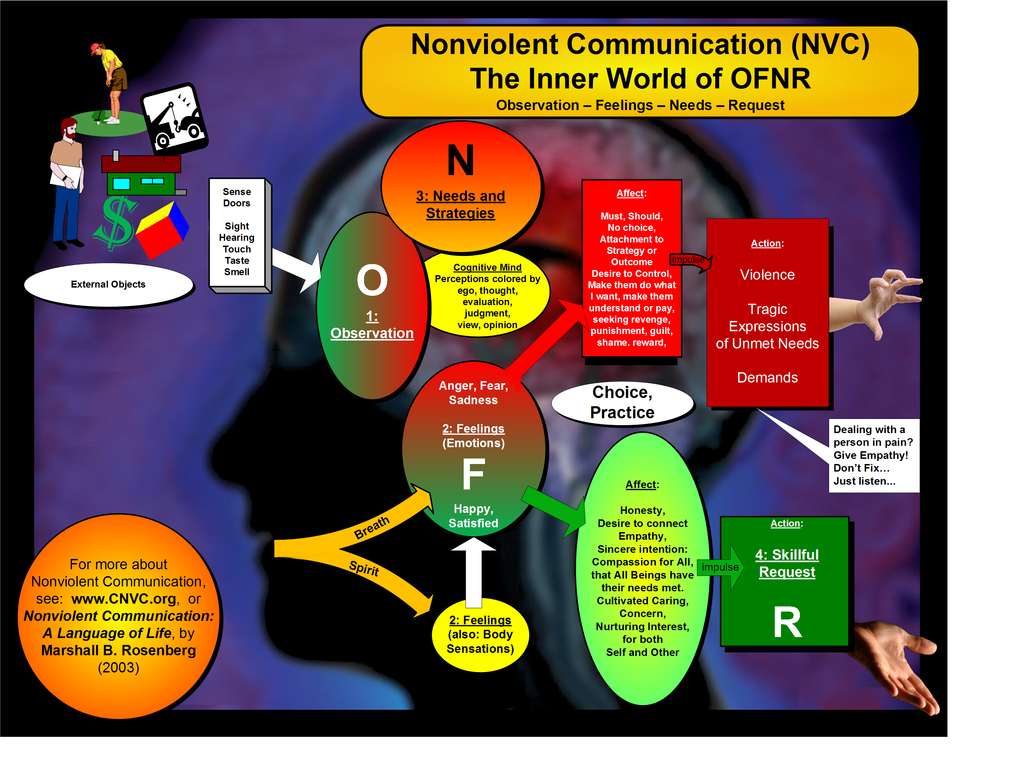Dear all,
On Tuesday Grade level coordinators, House Leaders, Counselors and SLTA attended a workshop given by one of our parents Aleksandra Roussiere. It was a good workshop and one that will be shared with all of you and parents at a later date. I walked away from the workshop feeling that there are some important learning that could and should be embedded in our positive education culture immediately. It was clear from the work of Marshall Rosenberg that the ability to connect with both oneself and others is essential for the development of empathy and compassion. NVC is rooted in the belief that all humans share the same universal needs, including the sense that they’re being heard, understood, valued, and respected.
In its simplest form Rosenberg's work boils down to form simple actions. By following these steps it is believed that we can shift the tone of communication and encourage collaboration by creating a meaningful conversation that connects and encourages the expression and sharing of everyone's needs.
Here are the 4 steps in short:
 |
"1. Observation. When you begin to speak about something, it is important that the facts are clear. Say what you have seen or heard (what was said or done by someone). Try to be precise and avoid mixing in what you think about what you have seen or heard. Observation is a job for your senses, not for your thoughts. A way to detect whether thoughts are mixed in is if you think that what you have seen or heard is good or bad. Good and bad are judgments, and judgments are thoughts. If you have such ideas, then try to be even clearer in describing the observation.
2. Feeling. What do you feel about what you observe? What is the reality inside you? Bring your attention to your body and find the right word for the feeling. Sometimes it can take a while to find the word, and sometimes there are more feelings. If you sense that the word you have chosen speaks about the other person and not you alone, then it is likely that thoughts and judgments have sneaked in. Then wait until you find a word that only describes the reality inside yourself. There are many feelings words, however, they often come down to: happy, sad, afraid or angry. (for more, see: List of Feelings)
3. Need. What do you long for when you observe and feel like this? Or, if the feeling is happy, what need is fulfilled for you in this situation? The things that people need or long for are basically the same things, although often not at the same time. The needs repertoire is the same for all human beings. Needs are also limited in number to some 10 basic needs, for example, Individuality, Community, Rest, Contribution (for more, see List of Needs). When you can express what you need in a situation, it creates a strong point of understanding and contact between yourself and the other person. You will feel it as ‘coming to yourself’ and being true to yourself. When you feel the need in the body and find the right word, you will most likely feel a sense of relief.
4. Strategy. This is about what action you would like to happen in the situation where you observe this, feel this and need this. What action would meet your need? What would be the best thing to happen for you? Who would be the best person to do it, yourself or the other person, both maybe, or a third person? And when? When it is clear for you what action you want to choose, NVC suggests that you express it as a request. This will make it more likely that the person you ask, will do it. It is about giving them a free choice. If you sense that you somehow also make a demand, then come back to yourself and remind yourself that you can survive a ‘No’ and that the other person’s freedom is parallel to your own sense of freedom. There will be other ways or other people to help you."http://voice-by-voice.org/nonviolent-communication/
To end this brief Food for Thought here is a video that explains more about Non Violent Communication.
Have a good Sunday,
Yours
Adrian

No comments:
Post a Comment